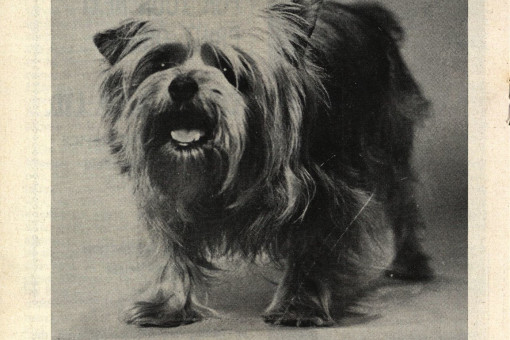How Huddersfield Town's Mascots Have Evolved Over the Years
 HTSA Admin
HTSA Admin
HTSA Admin

This article was originally published in the Huddersfield Daily Examiner
--
When David Wagner swapped the banks of the Ruhr for the Colne, he took every opportunity to emphasise the parallels between the Yorkshire terrier and his preferred style of high-pressing, never-say-die football.
Over the past few years, this happy coincidence has evolved into a full-blown philosophy—or ‘Terrier identity’—that has come to define Huddersfield Town; not just on the pitch, but off it, too. After all, what better represents a plucky underdog with ideas above its station than a plucky underdog with ideas above its station? Nothing, really, but that’s not for want of trying.
The club’s original crest was a carbon copy of the Huddersfield coat of arms, comprising three turrets and three rams on a yellow background. Mascots, meanwhile, have seemingly changed at the drop of a hat.
During their first season at Leeds Road, way back in 1910, the Town faithful were entertained by Billy the Goat, a mascot cliché if ever there was one. We're not sure what happened to him, but a decade later, he’d been replaced by a replica of Aladdin’s Lamp, which the Theatre Royal in Leeds had kindly lent to the club after some good-natured arm twisting. Apparently, someone would rub it before every match for good luck. It must have worked because in 1920 Town managed to secure promotion to the top-flight. Recognising their grave mistake, our noisy neighbours quietly repossessed the magic trinket, only to find it replaced by an equally effective stuffed donkey. The latter helped Town to a famous FA Cup victory over Preston North End in 1922, before promptly catching fire during the ensuing celebrations.
The 1920s, 30s, and 40s bore witness to a collection of even more weird and wonderful talismans, from fans dressed as Charlie Chaplain to a three-handled loving cup produced by Spode. Come 1953, it was the turn of an elderly gentleman dressed in a waistcoat, boater hat, and blue and white striped trousers. And sometime in the early 1970s, an all-girl baton twirling marching troupe enjoyed a short-lived stint in the Pennine sun.
Not exactly Mad Men, then.
Indeed, it wasn’t until ex-Chairman Frank Drabble hired a promotions manager by the name of Bill Brooke that the club began to craft a clear, coherent identity. Brooke’s first act was to introduce the ‘Terriers’ nickname alongside the iconic ‘Red Terrier’ badge at the beginning of the 1969/1970 season as part of a wider rebranding exercise, which included bringing back the famous blue and white stripes. He also convinced the powers that be to adopt an actual Yorkie called Skippy as a match-day mascot. Unfortunately, Skippy didn’t last long. Six months into the role, he was run over near the traffic lights in Honley.
Tragedy notwithstanding, Ian Greaves’ side took the Terrier moniker to heart. They played on the front foot, constantly snapping at the opposition’s ankles, and won the Second Division at a canter. Perhaps because of that success, the Terrier stuck. Since then, it’s undergone several different incarnations, from Terry and Tilly to the new sub-brand aimed at showcasing Huddersfield to a global audience.
So, whatever the future might hold, we can all be safe in the knowledge that Skippy’s sacrifice wasn’t in vain. Here’s to a true pioneer.
